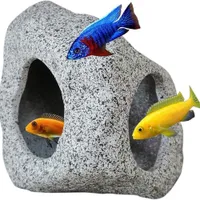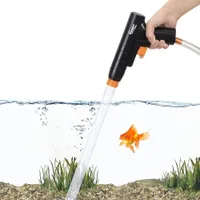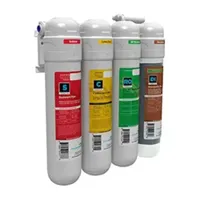Why is my fish tank cloudy?
Our vet explains the causes of a cloudy fish tank and shares some solutions
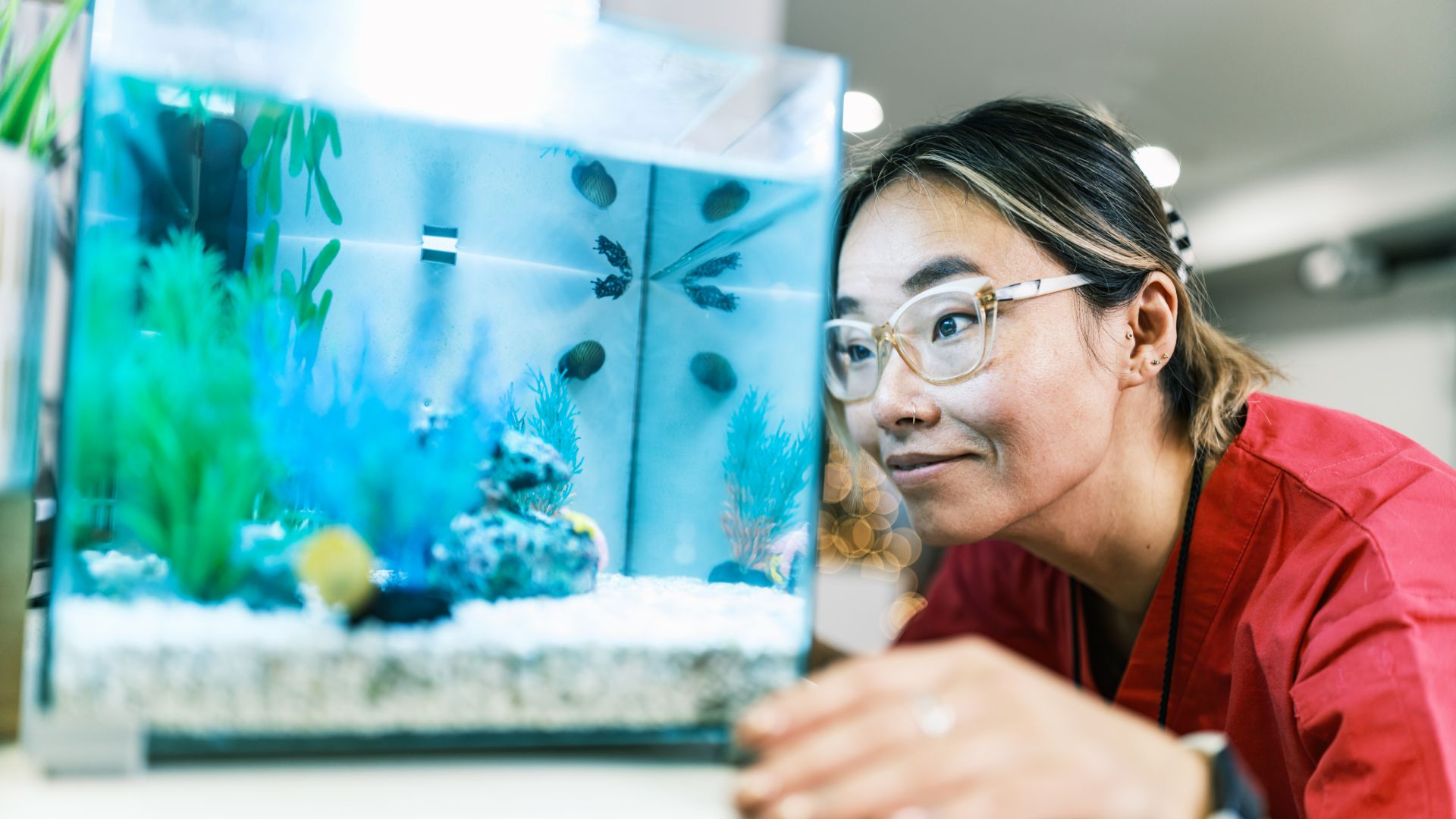
If you're a fish owner, you've probably wondered aloud, "why is my fish tank cloudy?" It's a common question and a problem that often plagues amateur aquarium owners even when they own the best fish tank. There are a few reasons why your fish tank is cloudy, and a lot of it has to do with bacteria, nutrients, and the objects you have inside your tank.
Cloudy fish water makes it difficult to see all your beautiful fish (as well as the best fish tank decorations you’ve placed in there) and the hard work you've put into creating a beautiful home for them. Whether you've got one of the best small fish tanks or one of the best tropical fish tanks, you want your water to be crystal clear for you and your fish.
While the appearance of cloudy water won't harm your fish, it can point to a chemical imbalance in the tank, which could be dangerous for your aquatic friends. Don't worry, in this article we'll answer the frequently-asked question of "why is my fish tank cloudy" while also providing you with tips on tricks on how to fix it.
Why is my fish tank cloudy?
There are quite a few reasons why your fish tank may be cloudy. Fish owners commonly notice cloudiness in a freshly filled or brand-new tank, but there are instances where a long-maintained tank can get cloudy.
According to vet Dr Rebecca MacMillan, “Cloudy fish tanks are usually caused by a bacterial bloom, the condition of the water you are adding to your aquarium, or dust from your substrate material.”
We'll take you through all the main reasons why your fish tank is cloudy – and we’ve also got advice on how to clean a fish tank.
1. Substrate and decoration
If this is a new aquarium setup that you’ve started from scratch, it could be whatever substrate you’re using. Substrate is the material you use to line the bottom of your tank, and many of them used for freshwater tanks are coated with epoxy – therefore you need to rinse them really well.
Get the best advice, tips and top tech for your beloved Pets
Substrates can also be incredibly dusty, so your best bet is rinsing the substrate (usually gravel) in small amounts to ensure you get all the materials off of it.
If your water is brownish, this could be due to the kind of decoration you added in there.
“A new aquarium may have cloudy water when you first set it up, which can happen if you haven’t thoroughly rinsed the gravel in the bottom of your tank to remove the dust before adding water,” advises vet Dr Rebecca MacMillan.
“It’s also essential that you soak your bogwood before setting up your tank to remove tannins that give a brownish tinge to the water.”
Aquarium Hideaway Rock Cave | Amazon
Suitable for tropical fish enrichment to give your aquatic pets a place to hide and rest.
2. Type of water
The type of water you're using could also be contributing to the cloudiness. “If you live in an area of hard water, your supply will contain things like dissolved minerals and metals,” says Dr MacMillan. “This can make water initially appear cloudy when you add it to your aquarium.”
3. Overstocking your tank
Once you start adding fish to your tank, overstocking or adding fish too quickly can cause cloudiness.
“Too many fish in your tank can lead to cloudy or dirty-looking water,” says Dr MacMillan. “This can happen if you keep increasing your fish numbers too quickly without a long enough gap between additions.
“Adding livestock too quickly to a newly-cycled tank affects the tank’s balance. You should ideally leave 4–6 weeks between additions, making sure that a new tank has had a chance to properly cycle first.
“In an over-stocked tank, the good nitrifying bacteria start reproducing to manage and digest the excess waste being produced. The fast-multiplying bacteria can create a cloud affecting the way your tank water looks.”
4. An increase in nutrients
In an established tank, there could be a sudden increase in nutrients that leads to a rapid increase in bacteria. This can happen if fish or plants die in the tank.
“Dead fish or decaying plants can have a negative effect on your water quality,” says vet Dr Rebecca Macmillan. “This can occur when your fish are breeding but the fry are dying, or if you have a disease affecting your livestock.
Similarly, over-feeding can ramp up bacterial levels. “Feeding your livestock too much can lead to cloudy water,” warns Dr MacMillan. “This can be due not only to the debris created by the old food but also to changes in the bacterial population of your aquarium. A bacterial bloom may occur when you overfeed your fish.”
The retailer should be able to advise how often you should feed fish, and how much. There should be advice to follow on the packaging, too.
5. Algae growth
Cloudy or even green water in your tank can be due to an overgrowth of biofilm or algae on the glass, which can be caused by too much direct sunlight on the tank or leaving indoor lights on the tank for too long. Excess nutrients can also cause algae growth, as can phosphates and nitrates.
As always, if your water changes in any way, test the pH level to ensure your fish are safe.
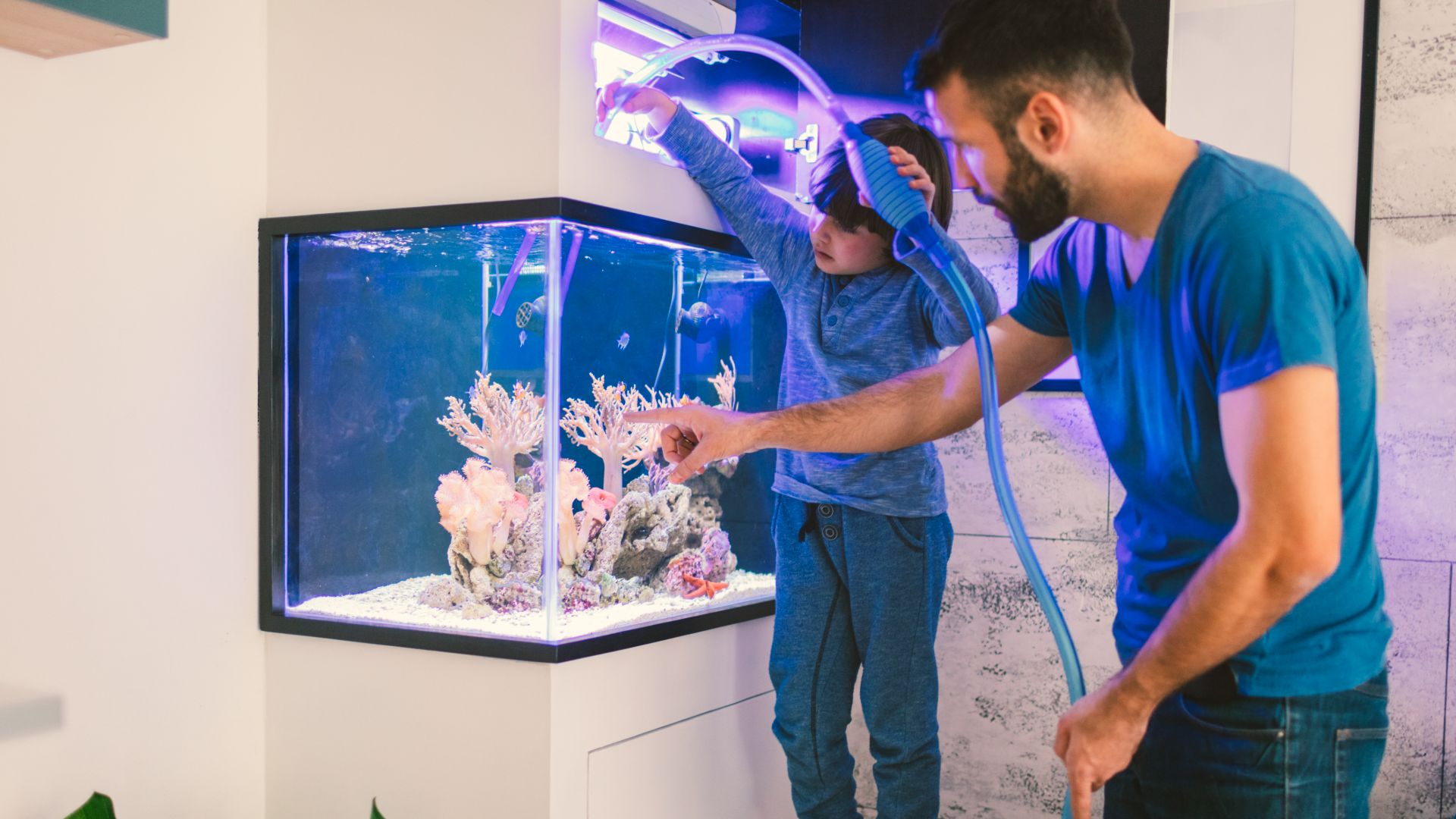
Why is my fish tank cloudy after water change?
There are a few things that could cause your fish tank to go cloudy after a water change. If you haven’t added new substrates, fish, plants, or other objects, then all signs point to the water.
New water introduces new nutrients, so the bacteria that cause cloudy water could be feeding off of that. You can let this run its course, keeping an eye on aeration and pH levels, as the bacteria will eventually die out once its nutrient source is gone.
You could have a high level of what's called “dissolved constituents” in a freshly filled tank, which are things like heavy metals, silicates, or phosphates. You can test your water to see if this is the case – if you have a high pH, this could be the issue. You can buy pre-packaged aquarium water, or get a tap water conditioner or reverse-osmosis ilterto get rid of unwanted constituents.
“If you live in a hard water area, your tank could look cloudy when you fill your aquarium,” says Dr MacMillan. “To improve your water supply, you may need to use a reverse-osmosis filter or a water conditioner.” These can be a bit expensive, but they remove contaminants from the tank water and filter the contaminant-free water back into the tank.
Tetra No More Algae Tablets | Amazon
A pack of eight tablets, enough to treat 80 gallons of water. When the algae dies, it can be picked up by the filter or large blooms can be removed using a net.
Hygger Aquarium Gravel Cleaner | Amazon
This three-in-one tool suctions dirt, changes water and washes gravel and sand. It’s easy to use and comes with an expansion tube to cater for all tank sizes.
How to fix a cloudy fish tank
The majority of cloudy aquariums can be cleared or improved by ensuring that 10 to 15 percent of the water is changed on a weekly basis, using a high-quality fish food and cleaning the gravel regularly. “Substrate residue will need to be removed from your tank with a gravel vacuum,” explains Dr MacMillan.
“While filters may extract some of the finer particles, the rest of the debris will settle at the bottom. This debris will continually be kicked up again by movement from your fish or subsequent water changes. Thoroughly rinsing your gravel will prevent this problem from occurring.”
You’ll also want to make sure you’re taking regular care of your aquarium with the best fish tank cleaners. “Tank maintenance is essential, so prune plants, remove dead material, and clean the glass regularly.”
If your water is green due to algae, you'll want to remove the tank from direct sunlight or keep the lights on in the room it's in for less time. Increasing your amount of aquarium plants will help keep the water nice and clear, as well as ensuring that you don't give your fish too much food, as waste will contribute to the growth of bacteria.
It’s also important to invest in a good filtration system. “Don’t forget to check that your filter is working effectively,” advises Dr MacMillan. “The filtration media may need cleaning or replacing. Some cheaper power filters use coarse foam which allows finer particles to pass through it and back into your tank water, so you may need to look at a different model that can meet your tank’s needs.”
Aquatic Life Twist-in 4-Stage Reverse Osmosis Water Filter | Amazon
This system produces up to 75 gallons of filtered water per day and its carbon block filter eliminates chlorine and it has an effective sediment removal system.
Finally, consider your fish population. Overstocking can cause problems with the balance of your aquarium, so double-check the recommended stocking density for your tank. “More fish means more waste,” warns Dr MacMillan. “Not only could this affect the appearance of your water, but it may also negatively affect the health of your fish. You may also need to consider a larger tank if you have large species of fish, as these will generate more waste than smaller varieties.”
Keeping your fish tank crystal clear can be quite a task, but there are plenty of ways to make sure your fish are swimming through gorgeous clear waters.
Read next: How to help fish boredom or best types of fish for beginners.

Rebecca is a vet surgeon who graduated from the Royal Veterinary College in 2009. She has a wealth of experience in first opinion small animal practice, having done a mixture of day-to-day routine work, on-call emergency duties and managerial roles over the years. She enjoys medicine in particular and she is proud to have recently achieved a BSAVA postgraduate certificate in small animal medicine (with commendation). She writes on various feline and canine topics, including behavior, nutrition, and health. Outside of work and writing she enjoys walking her own dog, spending time with her young family and baking!
- Bethany StoneFreelance Writer
- Dr. Rebecca MacMillanVet
